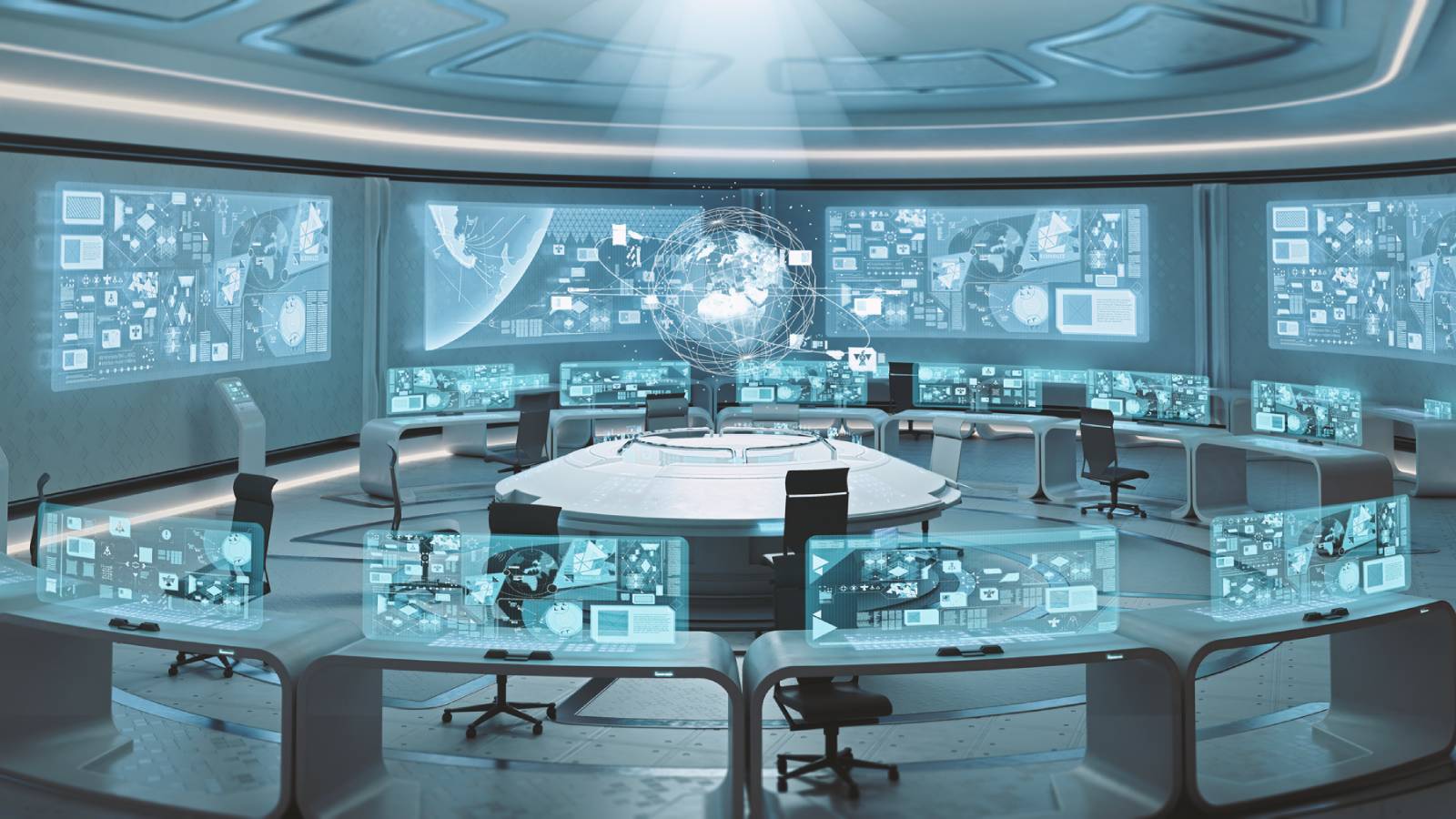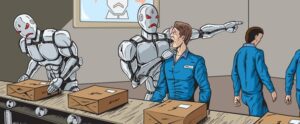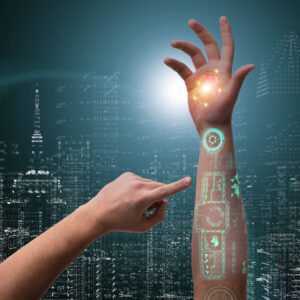Read How Technologies Will Transform Our Economy
FUTURE ECONOMY
Exponential technologies in information and communications, nanotech, biotech, robotics, and artificial intelligence are disrupting and transforming our economy. Many people today can hardly remember, and anyone under 40 has never experienced, a world without personal computers, smartphones, internet access to nearly all the world’s knowledge, and instant, face-to-face virtual visits with anyone, anywhere on the planet.
And this is only the beginning. These technologies could usher in a future of undreamed-of prosperity with longer, healthier, even transhuman lives for all.
These technologies will be major drivers of the economy, public policy, social institutions, and culture in decades to come.

Yet this bright future could be thwarted by such false fears as:
-
Robots will take our jobs, resulting in mass unemployment and poverty
-
AIs will become our masters;
-
A biohacked race of inhuman, soulless übermench will enslave us;
-
Nanotech will unleash plagues worse than COVID19.

Of these fears, the most basic for the economy concerns labor. Individuals looking to the future will ask themselves, “What work will we do? How will we fit into the emerging economy of tomorrow?”
But these false fears are, themselves, what we should really fear. We should fear that:
- Backwards-looking policymakers and citizens will fail to understand that our failing policies and institutions—government-dominated schooling, a “sickcare” rather than a true healthcare system, antiquated labor laws—cannot meet current much less future economic needs;
- Elected officials across the political spectrum will block exponential technologies or pass counter-productive policies in order to “save jobs and industries,” impeding the emergence of even more rewarding and high-compensation careers;
- The media, schooling planners, influencers, and cultural elites will perpetuate a self-defeating mindset of pessimism, risk-aversion, and impotence that will stifle innovation and blind individuals to how they can become the creators of their own and the world’s great future.
To overcome false fears, we need to appreciate what an economy actually is.
An economy is the sum of we millions of individuals making our millions of individual choices based on our individual wants, needs, priorities, and dreams. It is the work we choose to do, usually in enterprises and partnerships with others, to product goods and services in various quantities and qualities that we exchange with millions of other individuals. And the economy is most efficient at meeting individual needs when it is based on individual, voluntary choice and exchange, that is, a free market.
Economies are dynamic and always changing, expanding wealth and innovation in the process.
Consider commerce: In 1800s rural America, small general stores offered only a handful of basic goods. As the twentieth century dawned, entrepreneurs Warren Sears and Alvah Curtis Roebuck were mailing out millions of catalogs containing hundreds of thousands of items, taking advantage of the expanding railroad network to allow consumers in growing towns to order products normally only available in the department stores popping up in large cities.
After World War II, entrepreneurs in housing construction and banking made it possible for millions of families to purchase their own homes, creating suburbs. This gave rise to shopping mall! In 1994 Jeff Bezos and in 1995 Pierre Omidyar took advantage of the spread the internet and affordable personal computers to create Amazon and eBay respectively.
During this process, the demand for workers with various skills and in what numbers changed significantly, but it was a wealth-creation process that enriched us all. This same process occurred in all other industries and sectors. With exponential technologies, the wealth creation will be even greater, requiring workers with different skills but offering opportunities for even greater compensation.
It is never easy to predict the future direction of an economy. That’s why entrepreneurs grow rich taking risks against current wisdom to create companies like Apple, Microsoft, Amazon, and Google. Even so, we can see the exponential tech-driven direction in a number of sectors.
For example, the capacities of 3D printers are expanding, using a growing number of diverse materials. Further, prices for these devices will continue to fall. So consider:
- Whole houses can now be printed. How will this disrupt the construction industry in years to come?
- Jet engines and even an entire rocket have been printed. How will this disrupt manufacturing?
- Three-D printing has established a niche market creating prosthetics for individuals who’ve lost limbs, bone replacements for accident victims, and even blood vessels and kidney filters. How will this disrupt the medical supply sector?
- Your body can now be scanned, and clothes can be 3D printed to fit your exact size, in any design or colors you desire. How will this disrupt the fashion industry and clothing sector?
What is certain is that we’ll all reap the benefits.
Exponential technology can transform the current “sickcare” system into a real “healthcare” system.
- We now are able to have our entire genome sequenced so our individual propensities for illnesses can be identified;
- Wearable diagnostics will monitor our bodies in real time; no need for the annual doctor’s visit because our health will be checked at every moment;
 Medicines and treatments could be targeted to us as individuals and advice on exactly how to prevent disorders from developing to begin with offered.
Medicines and treatments could be targeted to us as individuals and advice on exactly how to prevent disorders from developing to begin with offered.- Powerful AIs will detect the precursors of heart attacks or strokes before they hit us, and medics will be to our doors before we know we’re in danger.
- In the long run, such health risks will be few and far between; Genetic engineering and other techniques will free future generations from the ailments that have plagued humanity throughout its history. Living a very healthy 200 years or more will not be science fiction!
How will real healthcare disrupt the medical professions, the life and health insurance industries, and retirement planning?
We can appreciate that as some jobs are eliminated, others replace them; today, we see no more armies of women in offices working on typewriters, but we do see high-paid tech workers keeping our far-more efficient personal computers, websites and network communications going!
We already see Zoom substituting for in-person meetings during the pandemic. Soon these will be replaced by holodeck-like virtually reality meetings. We can imagine the new jobs in the private space sector, mining the Moon, setting up settlements on Mars, in Seasteading settling the seas, or even in fertilizing and farming the oceans!
sector, mining the Moon, setting up settlements on Mars, in Seasteading settling the seas, or even in fertilizing and farming the oceans!
So why the fear about the future?
The fear that technology will lead to widespread unemployment and poverty goes back over 200 years, to the beginning of the Industrial Revolution, when Luddites smashed machines out of this fear. This myth was spread widely by Karl Marx, and can be found to this day, even in the beliefs of American populists who think they have nothing in common with the founder of communism.
Picture a workshop with ten seamstresses each producing ten shirts each per day or 100 shirts total per day for the workshop. Now the owner, who provides the workspace, materials and other inputs, uses some of his profits to purchase machines that require only five women to operate but can produce

1,000 shirts per day. The owner might get rid of five workers, perhaps even cut some salaries. Now picture this happening in workshops for chairs, tables, kitchen utensils and the like. The ranks of the unemployed would grow along with poverty. The rich would get richer, the poor poorer. Marx predicted this would spark a revolution.
this happening in workshops for chairs, tables, kitchen utensils and the like. The ranks of the unemployed would grow along with poverty. The rich would get richer, the poor poorer. Marx predicted this would spark a revolution.
But one might ask in this scenario, who would buy all those shirts and other goods produced by cutting-edge technology if most people are poor and unemployed? In fact, what happened was more shirts meant lower prices meaning poorer citizens could afford to purchase them, raising their living standards. Lower prices also meant lower profit margins for producing shirts. Thus, investors would put more money into new enterprises, producing new goods. This, in turn, would create an increased demand of labor. Greater productivity would mean labor would become more valuable. Workers would be able to trade their efforts for more goods and services. 
This is the process that produced the middle classes in the developed world.
If policymakers and the public can purge themselves of the false scenario perpetuated by the Luddites and Marx, exponential technology can turbo-charge future prosperity. But the fear just keeps on coming. Before the pandemic and continuing today, we see headlines like:
- “Amazon is going to kill more American jobs than China did.”
- “Robots Could Steal 40% of U.S. Jobs by 2030.”
- “Within 20 Years Automation May Take the Place of About $5.1 Trillion/year in Labor With More Than 98% of Savings Going to Those Who Are Already Multi-Millionaires.”
- “America’s Retailers Are Closing Stores Faster Than Ever”
- “Robots won't just take our jobs – they'll make the rich even richer.”
One fear-based solution to these fears is seen in the headline “European lawmakers want robots to pay taxes.” The idea has circulated in the U.S. and elsewhere. While “saving jobs” is often the reason for this proposal, it is sometimes premised on the idea that some of the huge increases in wealth would be used to compensate unemployed workers and to retrain them for other positions, om the further fiction that government is competent to predict what jobs will be needed in the future.
Of course, taxing, that is, punishing the use of robots would simply slow production and purchasing of those devices. Further, the most basic economic literacy tells us that if government so taxed machines centuries ago, the incredible wealth and, thus, prosperous middle classes they created would have been delayed.
Since they come in so many varieties, shapes, and sizes, how would the taxmen define a robot? What about the hundreds of thousands already in use for decades in factories, warehouses, and other facilities?
Another proposal to deal with the feared explosion of unemployment is a Universal Basis Income. One popular version would simply have taxpayers, via government, turn over to each individual $1,000 per month as an income floor. For 330 million Americans, this would cost $4 trillion per year. But federal expenditures in 2020 were $4.7 trillion against only $3.7 trillion of revenues. Where would this magic money to double the federal budget come from, d=with debt quickly bankrupting the country?
Some suggest the federal government should sell off its vast land holdings in the West. This is a good idea it itself, but would not generate even a fraction of the needed UBI revenue. Most of the that land is desert or wilderness, with little apparent commercial value. Further, where it could be of value, for mining for example, government regulations restrict or bar such productive efforts. (Such restrictions should be lifted in any case.) Finally, there is no chance that individuals and businesses would or even could hand over to the government each year $4 trillion in wealth annually—Apple, Amazon, Google, and Microsoft stocks, 401ks, IRAs, houses, and alternative, promisingly profitable uses—for that government land.
Would this spending be on top of the over $1 trillion federal spending each year targeted to help the poor? The UBI is a prime example of “counting your chickens before they hatch,” of assuming wealth that has yet to be created. This solution in search of a problem is a non-starter.
While many fears about exponential technology are unfounded, there is an important issue we must face. With the Industrial Revolution, economic sectors and whole economies had a century or two to adjust to new productive realities. With exponential technology, adjustment times will only be a few decades or years. Thus, workers will need to break out of antiquated ways of thinking about themselves, a shift that should have taken place decades or centuries ago.
The distinctions between “worker,” “manager,” “investor,” “entrepreneur” and similar categories are, in fact, artificial. This is because:
- All workers are investors in their own skills and capacities;
- All workers are managers of their own time, short-, medium-, and long-term financial and life goals, and the strategies to achieve them;
- All workers are entrepreneurs, deciding what fields they should go into and watching for opportunities in a fast-changing economy.
Long gone are the days from the 1950s when most individuals might possibly have careers with a single company, doing the same job for 40 years. Gone soon will be the possibility of individuals ensuring their prosperity and career satisfaction in an exponential future if they’re trapped in nineteenth century, self-limiting mindsets.
While different sectors with needs for workers with different skill sets will change at different rates, the exponential future is coming fast and current laws, regulations and institutions are unable to meet even current demands much less those of the future. For example, before the pandemic, there were 1.6 million more job openings than unemployed Americans, so poorly does the government dominated schooling system prepare individuals for future careers. But there are a number of reforms that will help the transition to a future economy.
- Expand apprenticeships.
In the U.S., apprenticeships historically have involved individuals learning valuable trades for which there has been strong market demand—for carpenters, electricians, plumbers. But in the U.S. in 2018, while some 585,000 workers were registered in apprenticeship programs, that was only .45 percent of the workforce.
By contrast, some 70 percent of kids in Switzerland go through apprenticeship programs. Further, 40 percent of Swiss companies offer apprenticeship opportunities, covering some 230 professions, including banking and finance, pharmaceuticals, communications technology, and the like. These are “job tryouts” when students in late high school usually work part-time at companies while continuing classroom instruction, with those needing further education often going on to college. As important, these students earn money while they learn, and are imbued with a work ethic and just the entrepreneurial mindset needed to succeed in future careers.
By contrast, some 40 percent of American students go on to some form of secondary education after high school and about one-third receive a four-year degree. But many do so with government-backed loan guarantees. They often develop an entitlement mentality at universities, graduate with degrees of little market value, and are burdened under huge debts and resentment.
Swiss-style apprenticeships that connect education, training, and labor market needs are now gaining attention in the U.S. For example, CareerWise Colorado is modeled on the Swiss approach to match the needs of local businesses with local schools. It was founded in 2016 by Noel Ginsburg with then-governor, now U.S. Democratic Senator John Hickenlooper as co-founder.
Policy changes at the federal, state, and local level would help connect young people directly wit the real career opportunities for the future.
- Replace “unemployment insurance” with an “employment opportunity” system.
Currently, federal and state government, mostly through payroll taxes imposed on workers, fund unemployment insurance. These state-administered programs provide temporary support, with levels varying by state, for workers who are out of work. But just as individuals only “benefit” from current “health” insurance programs only when they get sick, so they only “benefit” from unemployment insurance when they lose their jobs.
Just as a true healthcare system would create mechanisms to prevent individuals from getting sick in the first place, so converting the current unemployment system to an “employment opportunity” system would, at minimum, shorten the time individuals are out of work and help them better transition into even better jobs.
For example, individuals could be allowed to invest some of the funds currently taken out of their paychecks into 401-K or IRA-style accounts. These could give them greater returns than current government guarantees and could be used for retraining when they lose jobs or, even better, continuing upgrading of skills ahead of possible downturns in the sectors in which they are employed. Further, individuals could be allowed to make tax-free donations to these accounts beyond the amounts currently taken from their paychecks for unemployment insurance.
- Robot-proofing and life-long learning
The example above and the probability that exponential technology would require more retooling of skills in the future points to the need for every individual to understand the need for life-long learning. Putting workers in charge of their own accounts as in the above scenario would create an incentive for entrepreneurs to look for ways to attract some of those funds by offering attractive.
Life-long learn could help address another issue. Today, colleges and universities are seeing registration levels stagnating even as their costs have been skyrocket; college tuition since 1980 has jumped by 1,184 percent compared to an overall inflation rate of 228 percent. As individuals more and more see that in so many cases a college degree is just not worth it, colleges might retool to offer “employment opportunity” subscriptions services with ongoing courses to keep individuals not only up on their skills but up on emerging sectors and opportunities—in nanotech, biotech, AI. Robotics—that will allow them more seamlessly navigate the exponential economy.
It is a longer discussion to deal with the sci-fi-type fears of rule by AIs and bio-mutate masters.
But it is important to note that ignorance breeds fear and impotence. Therefore, as more individuals are in careers in exponential technologies, as the level of cultural knowledge about these technologies expands, as institutions are changed to facilitate their emergence, understanding will ensure control and vanquish fears.
While it wasn’t fear exactly, many individuals experienced angst as personal computers began to spread from the mid-1970s and when the internet took off in the 1990s. Some of it was just learning the new technology. What are all those buttons and function keys? But has we began this examination by saying, anyone under 40 has never experienced a world without personal computers, smartphones, internet access to nearly all the world’s knowledge, and instant, face-to-face virtual visits with anyone, anywhere on the planet. Children are competent in these technologies and embrace rather than fear them.
And as we noted, exponential technologies will major drivers of the economy, public policy, social institutions, and culture in decades to come. Let’s embrace and create this future!
FUTURE ECONOMY ITEMS
- November 2020, Seizing Our Singularity Future: An Entrepreneur's Guide, edited by Edward Hudgins, contributions by Ojochogwu S. Abdul, Edward Hudgins, Gennady Stolyarov II, Brent Ellman.
- June 2020, Value Creation Principles: The Pragmatic Theory of the Firm Begins With Purpose and Ends With Sustainable Capitalism, by Bartley J. Madden.
- January 2020, The Future Is Faster Than You Think: How Converging Technologies Are Transforming Business, Industries, and Our Lives, by Peter H. Diamandis and Steven Kotler.
- October 9, 2019, Podcast: The Hostile Robot Takeover (Guest: Edward Hudgins) With Andy Singer
- August 15, 2019, Trump Administration Proposes More Flexible Apprenticeship Rules, Edward Hudgins
- June 2016, Humanity's Future: How Technology Will Change Us," by Jay Friedenberg
- September 2014, Zero to One: Notes on Startups, or How to Build the Future, by Peter Thiel